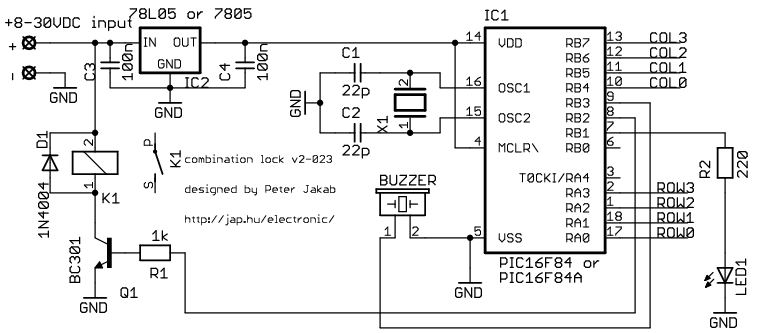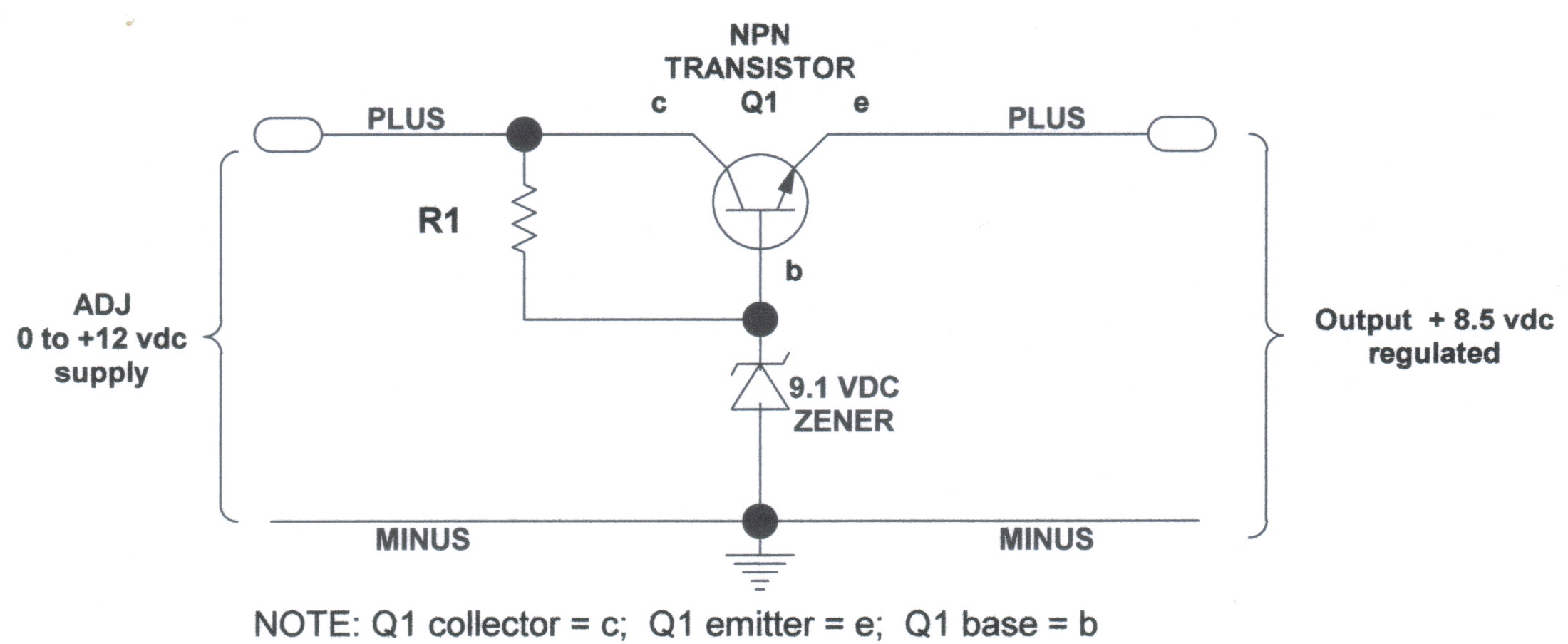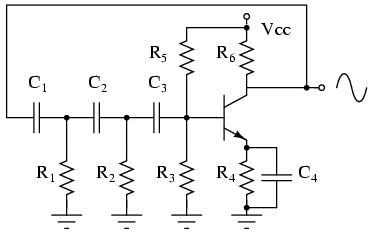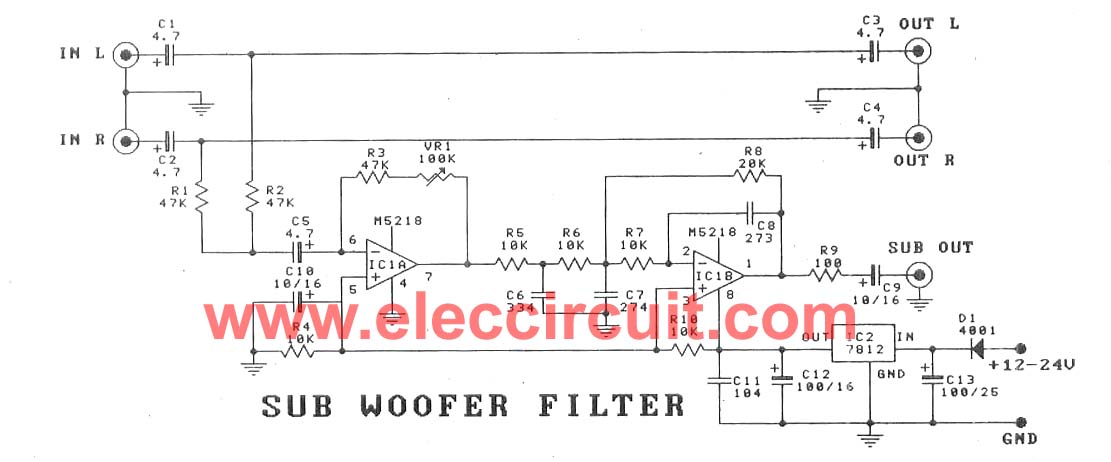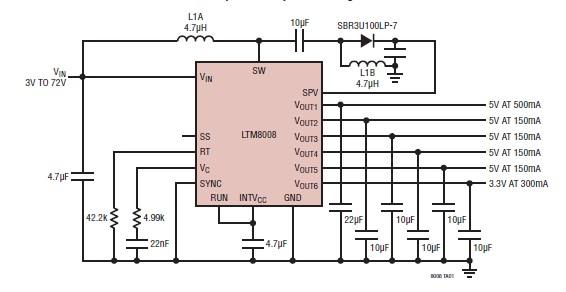
Regulator Combination Circuits
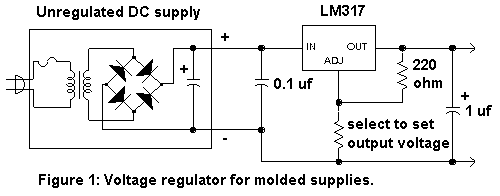
There are a number of ways to obtain the low voltages required to run small projects from the wall power outlet. The simplest way is to buy a factory-built molded supply which is designed to plug directly into the wall outlet. Some such supplies have an internal voltage regulator and need no additional parts, others provide an unregulated DC voltage and many are simply AC transformers in a box. The regulated types offer less power output for a given size with currents limited to a couple of hundred milliamps but the AC transformer types can provide several amps. The distinct advantage of the molded supply is that no line-voltage wiring is required and they are easy to find in local stores. Some deluxe models have a terminal for the earth ground which may be used to ground the chassis of your project. Such supplies.
The use of molded power supplies for small electronic projects is a practical solution for obtaining low voltages from standard wall outlets. These supplies typically come in two main types: regulated and unregulated. Regulated supplies, equipped with internal voltage regulators, provide a stable output voltage, making them suitable for sensitive electronic circuits that require a consistent voltage level. However, their output current is generally limited to a few hundred milliamps, which may restrict their use in applications requiring higher power.
On the other hand, unregulated supplies and AC transformers can deliver higher currents, often several amps, but they do not maintain a constant output voltage under varying load conditions. This characteristic makes them more appropriate for less sensitive applications where voltage fluctuations can be tolerated.
The convenience of molded supplies lies in their design, which enables direct plugging into wall outlets without the need for additional wiring, thereby enhancing safety and reducing assembly time. Many models also include features such as an earth ground terminal, which can be utilized to ground the chassis of a project, further improving safety and stability.
When selecting a molded supply, it is essential to consider the specific voltage and current requirements of the project. Additionally, attention should be paid to the supply's specifications, such as output voltage tolerance and maximum load current, to ensure compatibility with the intended application. For projects requiring multiple voltage levels, a combination of these supplies may be employed, or a more complex power supply circuit can be designed to achieve the desired outputs.There are a number of ways to obtain the low voltages required to run small projects from the wall power outlet. The simplest way is to buy a factory-built molded supply which is designed to plug directly into the wall outlet.
Some such supplies have an internal voltage regulator and need no additional parts, others provide an unregulated DC voltage and many are simply AC transformers in a box. The regulated types offer less power output for a given size with currents limited to a couple of hundred milliamps but the AC transformer types can provide several amps.
The distinct advantage of the molded supply is that no line-voltage wiring is required and they are easy to find in local stores. Some deluxe models have a terminal for the earth ground which may be used to ground the chassis of your project.
Such supplie 🔗 External reference
The use of molded power supplies for small electronic projects is a practical solution for obtaining low voltages from standard wall outlets. These supplies typically come in two main types: regulated and unregulated. Regulated supplies, equipped with internal voltage regulators, provide a stable output voltage, making them suitable for sensitive electronic circuits that require a consistent voltage level. However, their output current is generally limited to a few hundred milliamps, which may restrict their use in applications requiring higher power.
On the other hand, unregulated supplies and AC transformers can deliver higher currents, often several amps, but they do not maintain a constant output voltage under varying load conditions. This characteristic makes them more appropriate for less sensitive applications where voltage fluctuations can be tolerated.
The convenience of molded supplies lies in their design, which enables direct plugging into wall outlets without the need for additional wiring, thereby enhancing safety and reducing assembly time. Many models also include features such as an earth ground terminal, which can be utilized to ground the chassis of a project, further improving safety and stability.
When selecting a molded supply, it is essential to consider the specific voltage and current requirements of the project. Additionally, attention should be paid to the supply's specifications, such as output voltage tolerance and maximum load current, to ensure compatibility with the intended application. For projects requiring multiple voltage levels, a combination of these supplies may be employed, or a more complex power supply circuit can be designed to achieve the desired outputs.There are a number of ways to obtain the low voltages required to run small projects from the wall power outlet. The simplest way is to buy a factory-built molded supply which is designed to plug directly into the wall outlet.
Some such supplies have an internal voltage regulator and need no additional parts, others provide an unregulated DC voltage and many are simply AC transformers in a box. The regulated types offer less power output for a given size with currents limited to a couple of hundred milliamps but the AC transformer types can provide several amps.
The distinct advantage of the molded supply is that no line-voltage wiring is required and they are easy to find in local stores. Some deluxe models have a terminal for the earth ground which may be used to ground the chassis of your project.
Such supplie 🔗 External reference

